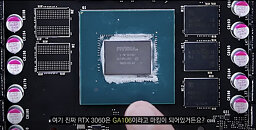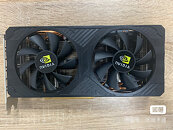
NVIDIA GeForce RTX 4070 Allegedly Launches on April 13
It has been pretty much confirmed that the NVIDIA GeForce RTX 4070 (non-Ti) is launching in April, but now, the rumored date has been specified as April 13th. The latest report comes from a well known leaker, hongxing2020, over at Twitter, who has a pretty good track record and had correct dates for RTX 30 and RTX 40 series launch dates. In case you missed it, the NVIDIA GeForce RTX 4070 is based on the same AD104 GPU as the RTX 4070 Ti, with slightly fewer cores, but still comes with the same memory specification as the Ti version.
This means the GeForce RTX 4070 should feature 46 streaming multiprocessors (SMs) which should leave it with 5,888 CUDA cores enabled. It will come with 12 GB of GDDR6X memory on a 192-bit memory interface. The TDP is rumored at 200 W. There were some rumors that NVIDIA could have three different SKUs for the RTX 4070, with 16 GB, 12 GB, and 10 GB of VRAM, but so far, this has just remained as a vague rumor coming from Eurasian Economic Commission (EEC) regulatory filings. NVIDIA is slowly completing the RTX 40 series lineup, so hopefully we will not have to wait too long for updates on the RTX 4060 Ti and the RTX 4060. NVIDIA, and its founder and CEO, Jensen Huang, will be holding the opening keynote at GTC on March 21st, so we could get at least some updates for the future GeForce lineup.
This means the GeForce RTX 4070 should feature 46 streaming multiprocessors (SMs) which should leave it with 5,888 CUDA cores enabled. It will come with 12 GB of GDDR6X memory on a 192-bit memory interface. The TDP is rumored at 200 W. There were some rumors that NVIDIA could have three different SKUs for the RTX 4070, with 16 GB, 12 GB, and 10 GB of VRAM, but so far, this has just remained as a vague rumor coming from Eurasian Economic Commission (EEC) regulatory filings. NVIDIA is slowly completing the RTX 40 series lineup, so hopefully we will not have to wait too long for updates on the RTX 4060 Ti and the RTX 4060. NVIDIA, and its founder and CEO, Jensen Huang, will be holding the opening keynote at GTC on March 21st, so we could get at least some updates for the future GeForce lineup.

































































